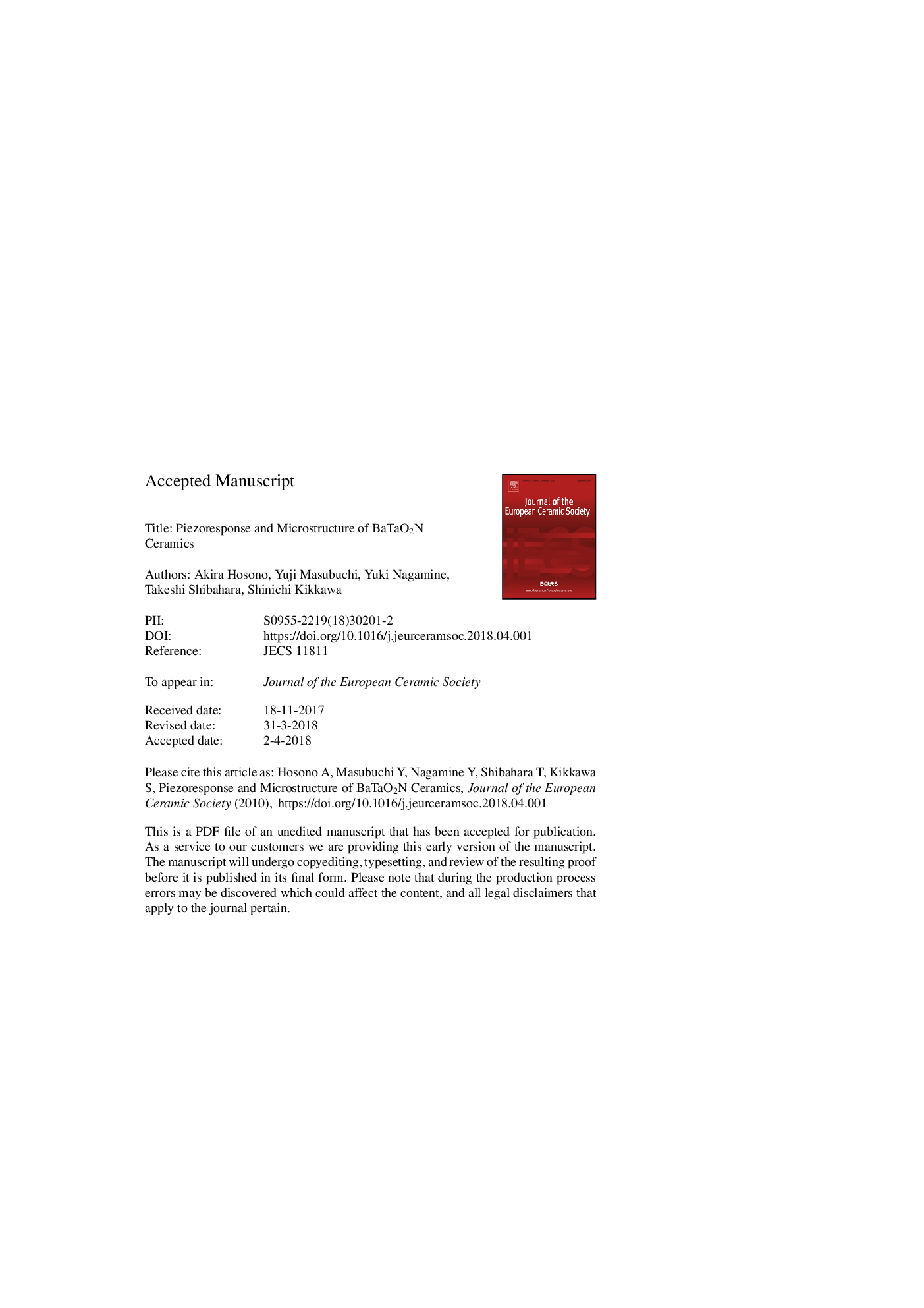| Article ID | Journal | Published Year | Pages | File Type |
|---|---|---|---|---|
| 7898030 | Journal of the European Ceramic Society | 2018 | 23 Pages |
Abstract
Piezoresponse force microscopy was conducted on a polished slice of the perovskite oxynitride ceramic BaTaO2N after ammonolysis at a bias voltage ofâ¯Â±â¯10â¯V. The ceramic surface was relatively porous because it was readily hydrolyzed by ambient humidity. While there was no piezoresponse on the surface of the ultrathin slice, a piezoresponse was clearly observed just below the surface of a thick slice. The response was enhanced in a denser sample. It increased with measuring voltage up to 7â¯V, and then gradually decreased up to 9â¯V. The response also gradually decreased with time but persisted even after 150â¯min at a measuring voltage of 6â¯V. Microstructural characterization revealed well-sintered grains, about 100â¯nm in size, in a relatively dense BaTaO2N structure. High-porosity BaTaO2N did not show any piezoresponse because its porous surface was easily hydrolyzed. A weak piezoresponse was observed for an electrically conductive slice obtained from deep inside a relatively dense BaTaO2N ceramic after ammonolysis.
Related Topics
Physical Sciences and Engineering
Materials Science
Ceramics and Composites
Authors
Akira Hosono, Yuji Masubuchi, Yuki Nagamine, Takeshi Shibahara, Shinichi Kikkawa,
